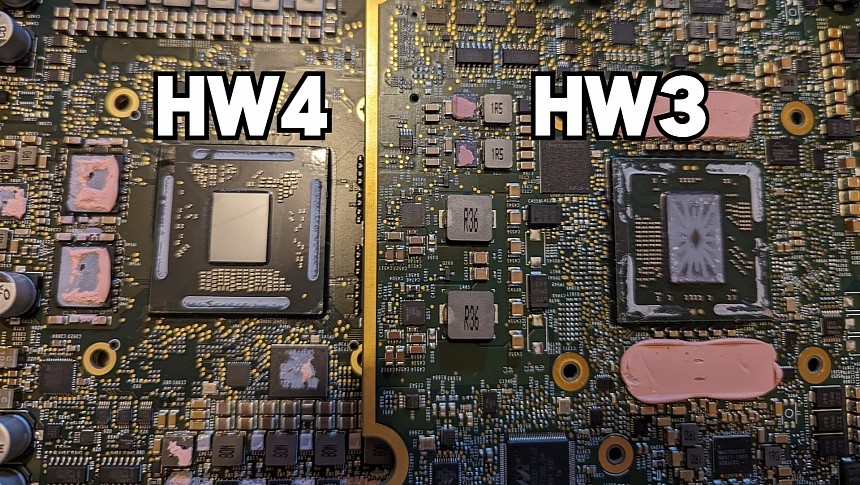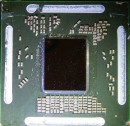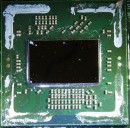A teardown of the Hardware 4 computer in the Tesla Model Y revealed that the infotainment side had been crippled, with less RAM and storage compared to the HW3 counterpart. Digging deeper into the secrets of the HW4 components revealed that the Autopilot side was a net beneficiary.
Earlier this month, a teardown of the Hardware 4 computer in the Tesla Model Y revealed that the infotainment system only has half the storage and RAM of an HW 3 unit. Many bashed Tesla for skimping on safety, confusing the HW4 unit with the computer that runs Tesla Full Self-Driving software. The truth is that Hardware 4 comprises several components, and the main unit houses both the infotainment system and the Autopilot computer, responsible for FSD calculations and whatnot.
The halving of RAM and storage space only affects the infotainment side. As one of our readers pointed out in the comments, this should not be a significant problem beyond preventing Steam from running on the Model Y. The gaming platform is not officially supported anyway, so it should not be a big deal. With 8 GB of RAM and 128 GB of storage, the infotainment system should have plenty of oomph to run most tasks. After all, many high-end phones are doing just fine with this kind of hardware, and the AMD CPU should be much more powerful than the high-end chips inside a phone.
Still, I stand by what I said that this configuration might not offer much in future-proofing the platform. As apps need more resources with every new version, Tesla owners with the new configuration might run into issues, forcing them to do a hard reset to clear burgeoning databases and make the infotainment system "fly" again. Still, I emphasize that this has nothing to do with the car's ability to run FSD Beta or Autopilot. This part is handled on another circuit board inside the HW4 housing.
Green (@greentheonly), who tore down the Hardware 4 computer and discovered the cost-cutting measures on the infotainment system, also offers insight into the Autopilot computer. After decapsulating the chip responsible for the FSD calculations, Green found a smaller chip than the HW3 computer. The smaller die size points to manufacturing improvements, considering that the newer chip is more powerful and likely has more transistors. Green even posted a side-by-side photo of the two boards, showing the differences.
Unlike the HW4 infotainment system, the Autopilot computer has more CPU and NPU cores, operating at higher frequencies. The HW4 Autopilot computer has double the RAM (16 GB versus 8 GB) and four times the storage (256 GB versus 64 GB). Now you know where the components from the infotainment side have been relocated. Also, the HW4 components are better, with Tesla switching to faster UFS storage and GDDR6 RAM. This points to plenty of resources to process the high-definition video streams from the Autopilot cameras.
Despite the superior processing power, the HW4 vehicles are software-limited. Until Tesla adapts the software to run on the new hardware, owners don't have access to FSD Beta or even basic Autopilot. Only recently did Tesla offer support for Vision park assist on the HW4 vehicles.
The halving of RAM and storage space only affects the infotainment side. As one of our readers pointed out in the comments, this should not be a significant problem beyond preventing Steam from running on the Model Y. The gaming platform is not officially supported anyway, so it should not be a big deal. With 8 GB of RAM and 128 GB of storage, the infotainment system should have plenty of oomph to run most tasks. After all, many high-end phones are doing just fine with this kind of hardware, and the AMD CPU should be much more powerful than the high-end chips inside a phone.
Still, I stand by what I said that this configuration might not offer much in future-proofing the platform. As apps need more resources with every new version, Tesla owners with the new configuration might run into issues, forcing them to do a hard reset to clear burgeoning databases and make the infotainment system "fly" again. Still, I emphasize that this has nothing to do with the car's ability to run FSD Beta or Autopilot. This part is handled on another circuit board inside the HW4 housing.
Green (@greentheonly), who tore down the Hardware 4 computer and discovered the cost-cutting measures on the infotainment system, also offers insight into the Autopilot computer. After decapsulating the chip responsible for the FSD calculations, Green found a smaller chip than the HW3 computer. The smaller die size points to manufacturing improvements, considering that the newer chip is more powerful and likely has more transistors. Green even posted a side-by-side photo of the two boards, showing the differences.
Unlike the HW4 infotainment system, the Autopilot computer has more CPU and NPU cores, operating at higher frequencies. The HW4 Autopilot computer has double the RAM (16 GB versus 8 GB) and four times the storage (256 GB versus 64 GB). Now you know where the components from the infotainment side have been relocated. Also, the HW4 components are better, with Tesla switching to faster UFS storage and GDDR6 RAM. This points to plenty of resources to process the high-definition video streams from the Autopilot cameras.
Despite the superior processing power, the HW4 vehicles are software-limited. Until Tesla adapts the software to run on the new hardware, owners don't have access to FSD Beta or even basic Autopilot. Only recently did Tesla offer support for Vision park assist on the HW4 vehicles.
I did the same to a hw3 and here they are side to side. The die on HW3 is actually bigger (on the right) pic.twitter.com/xgMXZYdf9E
— green (@greentheonly) August 16, 2023







